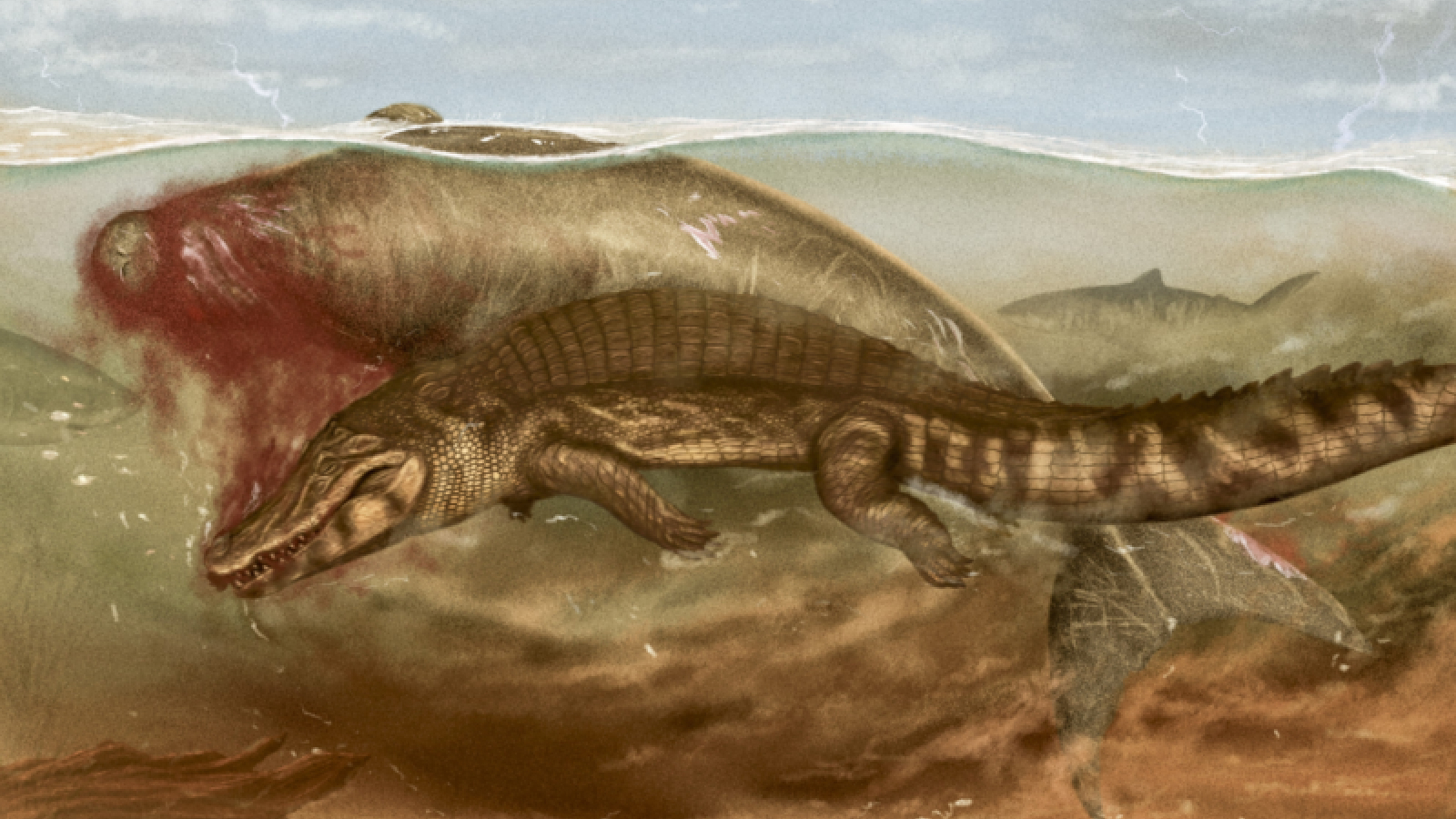
Scientists have revealed the fossilized remains of a prehistoric sea cow that was likely killed by an ancient crocodile then eaten by a tiger shark.
The skeleton, which was discovered in northern Venezuela, is a rare example of one animal being preyed upon by two different predators during the Early to Middle Miocene epoch (23 million to 11.6 million years ago). Although fossils can show if an animal has been eaten by another, it's often hard to tell the difference between active predation and scavenging.
"Our findings constitute one of the few records documenting multiple predators over a single prey, and as such provide a glimpse of food chain networks in this region during the Miocene," lead-author Aldo Benites-Palomino, a researcher from the Department of Paleontology at the University of Zurich, said in a statement.
According to the study, published Thursday (Aug. 29) in the Journal of Vertebrate Paleontology, the sea cow (from the genus Culebratherium) had conspicuous deep tooth impacts on its snout, which suggest the crocodile's first line of attack was grabbing its victim by the face and trying to suffocate it. Other gashes and incisions show the croc then dragged its prey and performed a death roll to kill it, much like a modern crocodile.
Related: Crocodile 'fingerprints' may reveal Australia's deadly, hidden predators
The experts also found a tiger shark (Galeocerdo cuvier) tooth in the sea cow's neck and saw shark bite marks across its skeleton. Often known as the "dustbins of the sea," tiger sharks today are known as lazy hunters and often scavenge for food, and it seems this was also true millions of years ago.
The fossil skeleton — which included part of the sea cow's skull and 18 vertebrae — was discovered in outcrops of the Early to Middle Miocene Agua Clara Formation near the city of Coro.
"We first learned about the site through word of mouth from a local farmer who had noticed some unusual 'rocks.' Intrigued, we decided to investigate," Marcelo Sanchez-Villagra, director at the Palaeontological Institute and Museum at Zurich, said in the statement.
The paleontologists prepared for several months, and it took five people seven hours to remove the skeleton, which was excellently preserved because it was buried in fine sediment.
Once the remains were collected, the team studied the shape, depth, and (where possible) slashing orientation of the bite marks they could see on the fossils. The crocodilian made puncture wounds with an almost semi-circular outline as well as wider curved incisions as the victim was dragged in a death roll. The other bite marks had long, narrow slits with V-shaped cross sections, which is typical of a shark bite. The discovery of a tooth between the neck and rib cage confirmed the scavenger was a tiger shark.
These findings suggest that the food chain today remains similar to how it worked millions of years ago, with the carcass of a dead animal providing food for others.
"Today, often when we observe a predator in the wild, we find the carcass of prey which demonstrates its function as a food source for other animals too; but fossil records of this are rarer," Benites-Palomino said.







